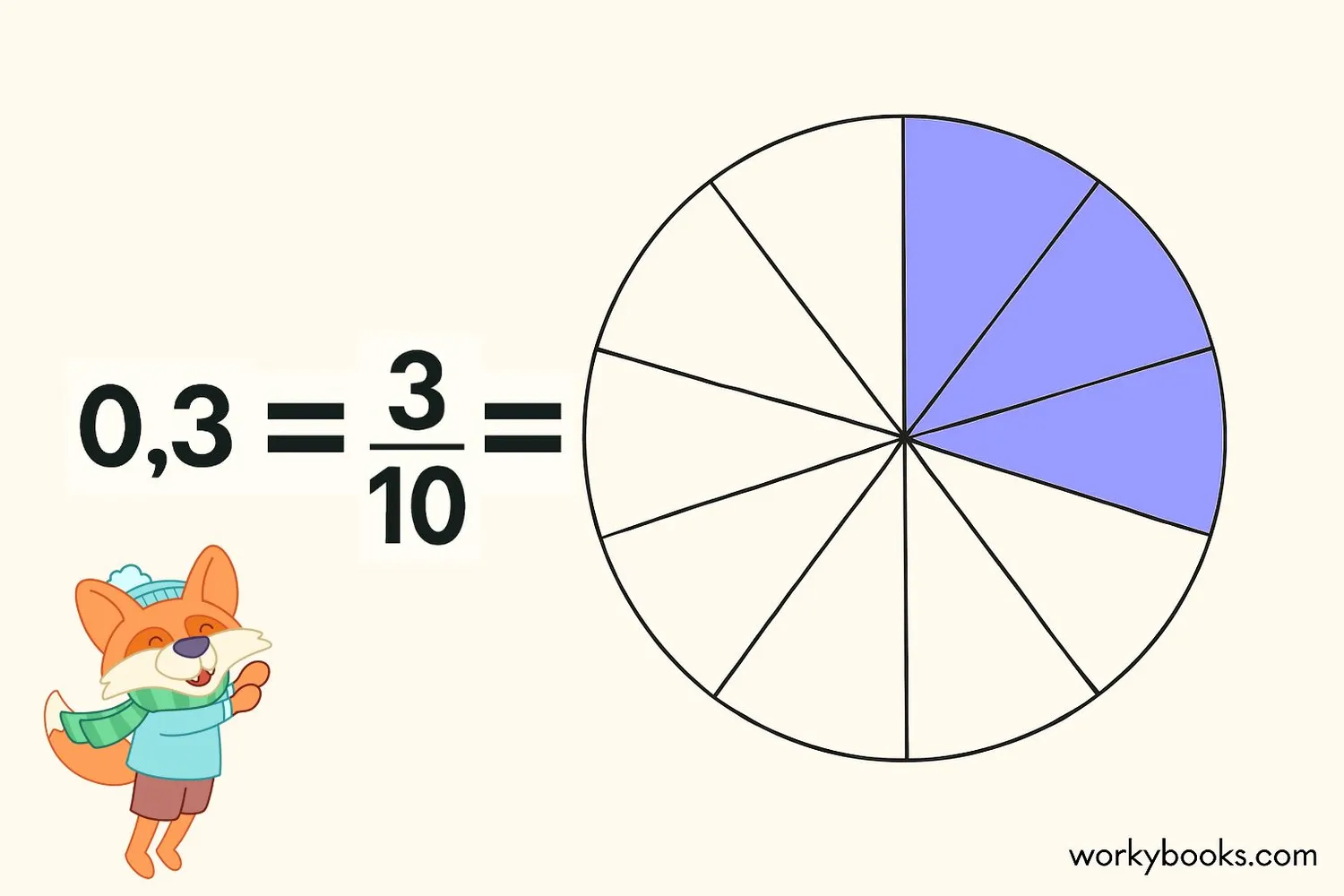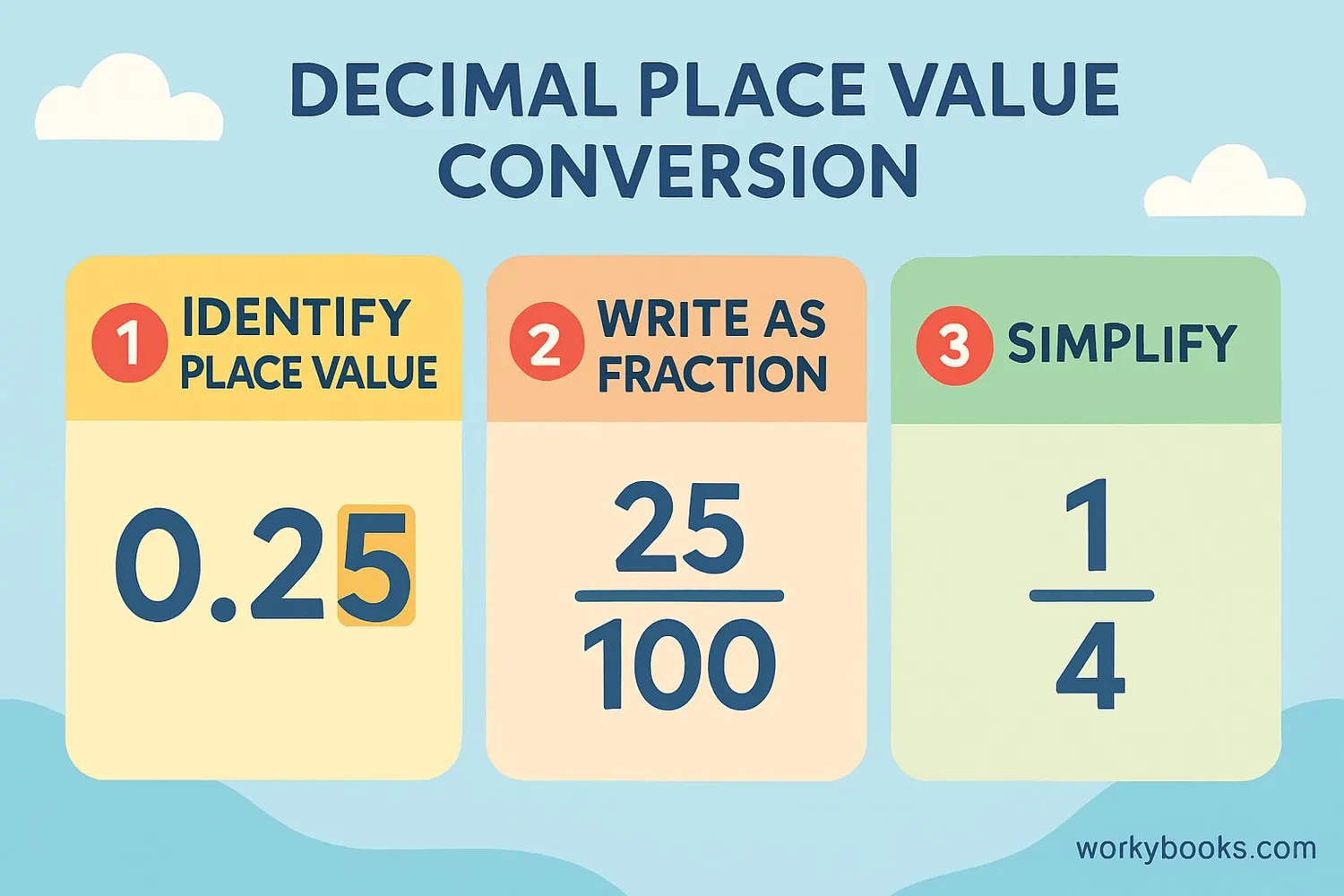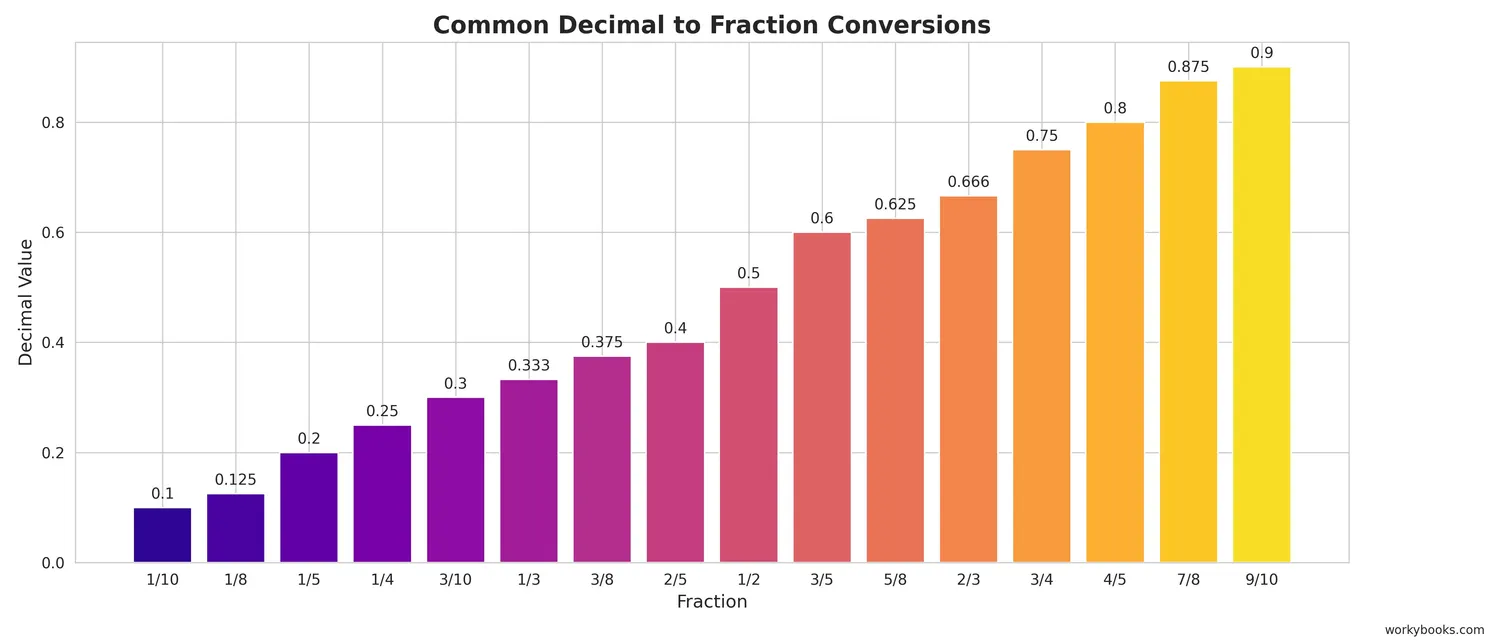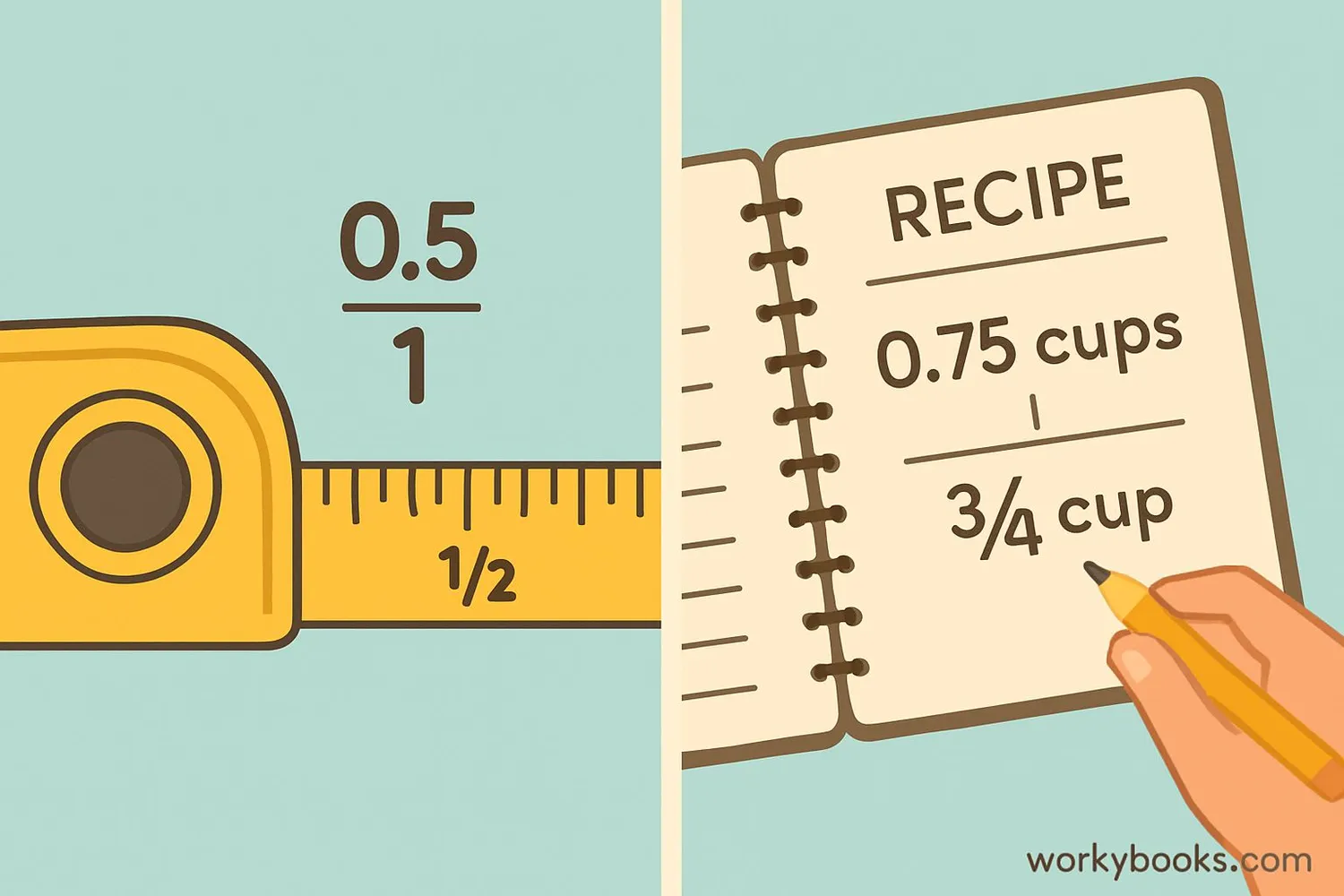Convert Decimal to Fraction - Definition, Examples, Quiz, FAQ, Trivia
Learn to convert between decimals and fractions with easy explanations and practice activities
What is Decimal to Fraction Conversion?

Converting decimals to fractions means changing numbers with decimal points (like 0.5) into fractions (like 1/2). Both represent the same value, just in different forms!
Decimals and fractions are two different ways to show parts of a whole. Decimals use a decimal point and place values (tenths, hundredths), while fractions show a numerator (top number) over a denominator (bottom number).
Why do we need to convert? Sometimes fractions are easier to understand, especially when comparing sizes or solving certain math problems. Learning to convert helps us become flexible with numbers!
Key Concept
Every decimal can be written as a fraction. The digits after the decimal point tell us the denominator (10, 100, 1000, etc.).
How to Convert Decimal to Fraction

Follow these simple steps to convert any decimal to a fraction:
Identify the place value
Look at the last digit after the decimal point. This tells you whether it's tenths, hundredths, thousandths, etc.
Write as a fraction
Write the decimal digits as the numerator. For the denominator, use 10, 100, 1000, etc., based on the place value.
Simplify
Reduce the fraction to its simplest form by dividing both numerator and denominator by their greatest common factor.
Conversion Formula
For example: 0.75 = 75/100 = 3/4
Remember
When converting decimals to fractions, your fraction should always be in simplest form at the end.
Decimal to Fraction Conversion Charts

These charts help you quickly find common decimal to fraction conversions:
Common Decimal to Fraction Chart
| Decimal | Fraction | Simplified Fraction |
|---|---|---|
| 0.1 | 1/10 | 1/10 |
| 0.2 | 2/10 | 1/5 |
| 0.25 | 25/100 | 1/4 |
| 0.3 | 3/10 | 3/10 |
| 0.4 | 4/10 | 2/5 |
| 0.5 | 5/10 | 1/2 |
| 0.6 | 6/10 | 3/5 |
| 0.75 | 75/100 | 3/4 |
| 0.8 | 8/10 | 4/5 |
| 0.9 | 9/10 | 9/10 |
Repeating Decimal to Fraction Chart
| Decimal | Fraction |
|---|---|
| 0.333... | 1/3 |
| 0.666... | 2/3 |
| 0.111... | 1/9 |
| 0.222... | 2/9 |
| 0.1666... | 1/6 |
Chart Tip
Notice how decimals with one digit after the point have denominator 10, and those with two digits have denominator 100?
Real-World Examples

Let's practice with some real-world examples:
Example 1: Sarah has 0.75 of a pizza. What fraction is this?
Solution: 0.75 = 75/100 = 3/4
Example 2: A pencil is 0.25 meters long. Convert to fraction.
Solution: 0.25 = 25/100 = 1/4
Example 3: Convert 1.5 to a fraction.
Solution: 1.5 = 15/10 = 3/2 = 1 1/2 (mixed number)
Example 4: Convert repeating decimal 0.333... to fraction.
Solution: Let x = 0.333... Then 10x = 3.333... Subtract: 10x - x = 3.333... - 0.333... → 9x = 3 → x = 3/9 = 1/3
Practice converting measurements you see around you - recipe amounts, money, or sports statistics!
Conversion Tip
When converting decimals greater than 1, convert the decimal part to a fraction and keep the whole number.
Conversion Practice Quiz
Test your conversion skills with this 5-question quiz. Choose the correct answer for each question.
Frequently Asked Questions
Here are answers to common questions about decimal to fraction conversion:
Math Trivia
Discover interesting facts about decimals and fractions:
Ancient Fractions
The ancient Egyptians used fractions as early as 1800 BC. They had special symbols for fractions like 1/2, 1/3, and 1/4, but all other fractions were written as sums of unit fractions (fractions with numerator 1).
Decimal Point Origin
The decimal point was first used by mathematician John Napier in 1616. Before this, different symbols like a vertical bar or a comma were used to separate whole numbers from fractional parts.
Fractions in Space
NASA engineers use fractions extensively in spacecraft design. The Mars Rover had components measured to fractions of an inch to ensure perfect fit in the limited space of the rocket.
Longest Decimal
The fraction 1/97 has a decimal that repeats every 96 digits! That's one of the longest repeating cycles for a fraction with denominator less than 100.





